My Approach
I see established approaches as a gift from those who originally developed them - respect for their contribution. I am not boxed in or limited to any single approach. My way of working is eclectic, drawing on a variety of resources, tools, and life experiences to meet the unique needs of each client. I adapt what is useful from recognized approaches, alongside my own original methods, always with the ultimate aim of supporting clients to share their story, talking freely, reach their goals, and feel empowered. Life is a great teacher, and I lean on life experiences in a counselling context to assist others in their journey.
List of Tools
Three-Pronged Approach (TTA)
We're often taught counselling is entirely client-centred - that everything revolves around the client. But in practice, real change happens through three vital parts working together: the client, the process, and the counsellor.
The client brings what matters to them.
The process is alive and moving, shaping what unfolds.
The counsellor is present and ready, holding the space with care and intention.
When all three come together, the client can see beyond the immediate issue, engage more actively with themselves and their world, and move toward meaningful change.
Tying The Three Together (TTT)
This tool ties the three together - thoughts, feelings, and actions. Each one directly fuels the other, shaping how we see ourselves and how we move in the world. Here's the truth: if you think rubbish = you'll feel rubbish = and you'll act rubbish. That cycle can run on repeat until it drags you down. But when clients stop and check their feelings, they soon trace back to the thoughts behind them - and thoughts can be challenged. A person can feel rubbish because they thought a thought, only to discover later - it was misplaced.
TTT helps cut through those old loops: Where did that thought come from? Do I even believe it? Was it just what I was taught? By disputing and reshaping the thought, the feelings shift, and so do the actions. It's that simple, and that powerful. Changing even one part of the three creates a ripple - a new way of thinking, feeling, and acting that builds self-responsibility and real empowerment.
Identifying My Triggers (IMT)
Sometimes we have no idea why we react the way we do - a person, situation, or event just sets us off. These reactions can become automatic, a default way of coping. Think of a trigger like a finger on a gun. The pull may feel instant, but it came from somewhere. By identifying, naming, and owing our triggers, we take back control. Instead of the shot firing wildly, anchoring helps us ground ourselves - to pause and ask three key questions: (1) What happened? (2) What are my beliefs about what happened? (3) What was the outcome, and what could I do differently?
This process disempowers old reactions, cuts through the automatic loops, and gives clients the power to choose a new response. Anchoring provides stability in the moment while insight clears the path forward. The result is self-responsibility, healthier patterns, and real empowerment.
The Art of Role-Playing (AOR)
Role-playing gives clients a safe way to say the things that often stay bottled up. It might mean speaking to a chair, an object, or even the Counsellor as if they were someone else. This process can uncover new perspectives, release emotion, and bring clarity. It's a tool that can be used for many situations - from resolving unfinished business to exploring different sides of ourselves - always with care, guidance, and support. Briefing and debriefing is vital.
Squat-in-a-Box (SIAB)
When you're stuck in a box, what do you see? Squat. At best, four walls and maybe a lid. Boxes keep us confined - shaped by our own limits or by the expectations of others, or by the so-called comfort zone. But comfort zones aren't really comfortable - they just keep us small. They affect how we think, how we see the world, and how we relate to people around us. This tool helps clients explore their box - what's holding them in - and find ways to shift perspective, break through walls, and step into a bigger view of life.
Know-See-Speak (KSS)
Sometimes it's hard to put into words what we really think or feel. Clients often want to understand what's going on, but can't always see beyond their circumstances, let alone give voice to it. KSS helps build confidence, courage, and clarity. It invites clients to pause and ask: What do I know about this deep down? What do I see in my situation? What do I want to say? This process assists clients to tell their story, untangle confusion, and make sense of experiences. When a person can know, see, and speak their truth with honesty, they can own it - they find empowerment and a clearer way forward.
Art-Draw-Scribble (ADS)
You don't need to be an artist to use this tool. Everyone has a unique and authentic way of expressing themselves with a pen in hand. Sometimes it comes as a drawing, sometimes as a simple scribble - either way, it tells a story. This process helps clients express what may be hard to put into words. Through drawing or scribbling, feelings about a person, situation, or event can surface, bringing clarity to past or present issues. With guidance and exploration, clients begin to recognise and identify emotions, giving them new ways to understand and work through what's going on. You are your own unique artist!
Keeping It Real Journals (KIRJ)
Writing is a powerful way to express yourself. For some, it's easier to put feelings on paper (or on screen) than to say them out loud. Journaling gives a safe outlet to write freely - no restrictions, no judgement. Keeping a journal helps clients keep a record of their thoughts and feelings, making sense of what's going on inside. It can ease anxiety by getting worries out of the head and onto the page, and it empowers people to see their journey more clearly. Journaling is a tool for expression, challenge, clarity, and self-discovery. It's a way to keep it real - to write what hurts, what helps, and what brings out your best self. It's not just a beautiful thing, it's a powerful thing.
Hear & Be Heard (HBH)
This is a tool that centres on the power of listening deeply and speaking clearly. It's about truly hearing another person - not just their words, but the meaning and feelings beneath them - and supporting clients to do the same. Through active listening, genuine presence, and clear communication, clients are guided to share their story openly while also learning how to express themselves with confidence. The counsellor listens beyond the surface, reflecting back and helping the client find their own clarity. HBH helps clients feel understood, valued, and empowered in their voice. Over time, they grow in confidence to speak their truth, improve their relationships, and even carry these skills into settings like work, study, or public speaking.
Cut Through BS (CTB)
Clear communication is a superpower. This tool helps clients tell their story with confidence, express themselves honestly, and interact more effectively in personal, professional, and everyday situations. CTB is about problem ownership - identifying what the real problem is, owning it, and keeping it real. It means setting clear boundaries for yourself and others, and cutting through the BS that gets in the way of healthy relationships. When clients learn to shift from blame ("you") to responsibility ("I"), they gain clarity, self-respect, and strong connections. CTB is empowering, practical, and straight to the point - a communication skill that cuts through noise and gives clients their voice back.
CTB isn't just a tool - it's your superpower.
Summary:
There are countless therapies and approaches available in counselling, each with aspects that can benefit the client and the process. I prefer to see them as tools and resources that can come into play to support the client's journey. The 10 tools described here are not exhaustive - there is so much more that can be drawn on - but they are practical, powerful, and proven to make a real difference.

Authentically You + Authentically Me
=
Knowing, Seeing, and Speaking Our Truth!
CONTACT
Monday,
Wednesday to Friday
10 am - 5 pm. Tuesday 10 - 2pm.
After hours, weekends, and public holidays – ask when you book.
Call or text: 022-327-8194
© Whanganui Counselling Services. All rights reserved.
HOURS
NZBN: 9429045010200


